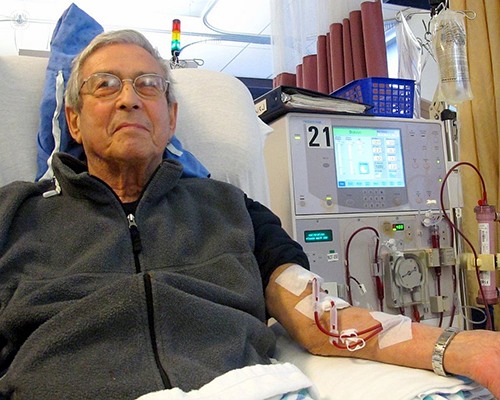Haemodialysis: how it is performed?
Escrito por:Haemodialysis is a treatment for patients approaching kidney failure. The procedure removes waste products and extra fluid, which builds up in the blood when the kidneys are no longer working correctly. Leading consultant nephrologist, Dr Peter Hill explains the process for haemodialysis, how it helps patients with kidney failure, and the changes to the diet you will need to make.

What is the process for haemodialysis?
Haemodialysis treatment is required up to three times a week in most cases, and is carried out at hospital or in your own home if you have been trained to do so. To complete haemodialysis, first a special blood vessel has to be created in the arm. The new blood vessel is created by connecting an artery to a vein, making the blood vessel larger and stronger in order to transfer blood into the dialysis machine and back again with ease.
Two thin needles are inserted into the blood vessel at different points, one that will remove the blood and transfer it to the dialysis machine, and one that returns the filtered blood to your body.
How does the dialysis machine work?
The haemodialysis machine contains a series of filters that remove the waste products from the blood. The waste products are passed into a dialysate fluid, which is then pumped out of the dialyser.
The dialysis procedure is not painful, and you will be able to relax or sleep, the procedure lasts around 3-4 hours. You may experience some muscle cramps, and sometimes patients may feel a little sick or dizzy.
Changes to your diet
Being on dialysis means that you have to make certain changes to your diet.
The biggest of these restrictions is a change to the fluid intake. Patients on dialysis will be required to reduce the amount of fluid they drink, as the machine will not be able to process a few days' worth of fluid. If you drink too much, it can lead to serious problems of fluid building up in the blood, tissues and lungs.
The second big change is to reduce foods high in potassium, phosphate and sodium (salt). These minerals can build up in the blood between dialysis treatments, and reach dangerous levels.
For more information on haemodialysis, you can book an appointment with a leading nephrologist here.



